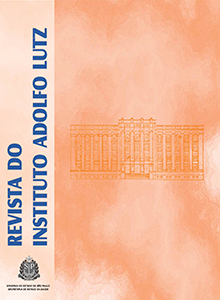Comparison between the macroscopic analysis during the inspection in bovine slaughterhouse and the microscopic examination to detect pathological processes
Keywords:
sanitary inspection, pathology, microscopy, animal culling
Abstract
This study aimed at comparing the result of macroscopic analysis performed by the Federal Inspection Service during the post-mortem examination and the evalation of the microscopic characteristics of lesions indicative of diseases in the condemned organs and viscera in an industrial slaughterhouse in the city of Castanhal, Pará-Brazil. Samples of diverse organs and viscera condemned by Federal Inspection Service during the post-mortem investigation were collected in a slaughterhouse located in the city of Castanhal-Pará. These samples were sent to the Pathology Laboratory of the Faculty of Veterinary Medicine of the Federal University of Pará – Campus Castanhal, where the histopathological analysis was performed. During the four-month period, 30,223 cattle slaughter were followed, and of these 12.467 organs and viscera were condemned. Among the condemned samples, 26 were collected for conducting the study. This investigation showed that the macroscopic diagnosis performed by the inspection agents were consistent with the microscopy analysis findings in 20 (76.9 %) of 26 evaluated samples. In this context, the sanitary condemnation criteria adopted by the inspection agents were very similar to the histopathological diagnosis results found in this study.
Published
2016-05-05
How to Cite
Nascimento, B. R. L., Damasceno Neto, M. S., Maciel, M. da S., Cerqueira, V. D., Moraes, C. M. de, & Almeida, M. B. de. (2016). Comparison between the macroscopic analysis during the inspection in bovine slaughterhouse and the microscopic examination to detect pathological processes. Revista Do Instituto Adolfo Lutz, 74(3), 286-294. Retrieved from https://periodicoshomolog.saude.sp.gov.br/index.php/RIAL/article/view/33483
Issue
Section
BRIEF COMMUNICATION










